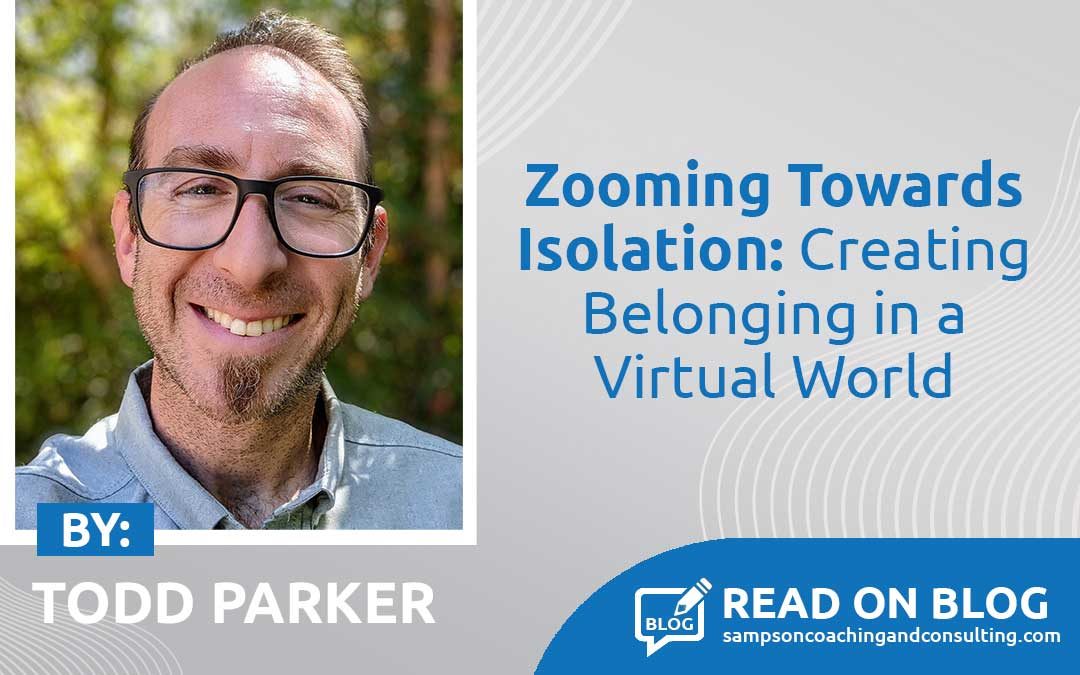“Vulnerability doesn’t come after trust—it precedes it. Leaping into the unknown, when done alongside others, causes the solid ground of trust to materialize beneath our feet.”
– DANIEL COYLE in The Culture Code
As much as you’d like to believe we stay at our jobs for money, job satisfaction, title, location, perks or power… research tells us we stay because we’ve been made to feel that we belong. We are living through a moment of truly unprecedented turnover, with job quitting in the tens of millions and at the highest level since the Bureau of Labor Statistics started tracking this data in 2000. Leadership, it’s time to step up and level up!
Recognize that an upfront, intentional, and consistent investment in employee belonging pays dividends well into the future (i.e. less turnover and mediocracy in exchange for increased job satisfaction, productivity, innovation, motivation, and overall happiness). In re-reading Culture Code by esteemed author Daniel Coyle, I’m reminded of the premium he places on “belonging cues” and how using the right cues, at “threshold moments,” can actually increase productivity AND instill a sense of belonging in our team. Coyle’s research unlocks the secrets of highly effective group cultures, focusing on three skill sets: [1] Safety, [2] Vulnerability, & [3] Establishing Purpose as a formula for driving belonging!
One memorable story from the book highlights a call center in India. Researchers discovered that in the hiring process, asking new hires to share their best qualities and skills combined with the simple act of gifting them a company sweatshirt with their name embroidered on it created a sense of shared identity, connection, and safety.
Want to build a strong sense of belonging on your team? Here are some quick tips:
- Overcommunicate that you’re listening! — YES! There’s a ‘look’ to engaged, active listening. Posture and a variety of evidence based expressions (both verbal and nonverbal) are known for driving intimacy in relationships. So, put away those distractions (email & phone), turn and face the other person (uncross your arms), remove physical barriers between you, make solid eye contact, project warmth (smile), and no interrupting. Additionally, strive to paraphrase what you hear, check for understanding, ask curious questions – ‘what & how questions’ rather than ‘why questions’, and ask for permission when you want to offer suggestions or help solve their problem. Remember, they may already have a solution in mind!
- Spotlight your humanness early on! — You make mistakes too. As leaders, our natural tendency to hide weakness and appear competent hinders the psychological safety of the team. And, it keeps you disconnected from the truth. Instead, get comfortable with self-disclosure, openness, vulnerability, and inviting input. Reveal your own errors and missteps and see it as an opportunity to build trust by seeking support and knowledge from your team. It must be safe to discuss the truth!
- Manners Matter! — Saying “thank you” to team members at all levels of your organization drives our human needs for inclusion and belonging. Thanking colleagues for their work, insights, efforts, questions, and the opportunity to work with them increases motivation and purpose. It communicates priority, that you are paying attention, and that they and their work matter.
- Foster Collision-Rich Spaces! — Creating spaces for unique, innovative, inspired serendipity to occur is more challenging and thus, more important than ever. Unplanned collisions in the breakroom, hallway, or even at lunch have been minimized or are gone entirely. What have you created to bind your people together, seek out connection, and make sure everyone is heard? A rule that meetings don’t end until everyone speaks? Hosting weekly stand ups and regular open-reviews where anyone can pitch in? This is your opportunity to establish norms in the post-pandemic organizational culture. Crafting a hybrid virtual model that breeds stability, egalitarianism, cohesion, shared identity, inclusion, and belonging, whether your employees are working remotely, on premises, or in some combination of both, serves all of us.
Like training to run a marathon or build muscle at the gym, creating a culture full of safety, vulnerability and shared purpose takes time and repeated, focused effort. As Coyle articulates, “Culture is a set of living relationships working toward a shared goal. It’s not something you are. It’s something you do.”


Recent Comments